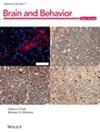Evaluation of Risk Factors in Patients With Chronic Daily Headache and Medication-Overuse Headache
Abstract
Purpose
The aim of this study is to compare the quality of life, daily physical activity level and perception of illness in patients with chronic daily headache, medication-overuse headache, episodic migraine, and episodic tension-type headache across disease subgroups with respect to possible risk factors such as alcohol/caffeine/nicotine use, eating attitude, which may trigger chronic headache and medication overuse.
Materials and Methods
VAS, International Physical Activity Questionnaire (Short) forms, SF-36 Quality of Life Scale, Illness Perception Questionnaire, Beck Anxiety Inventory, Beck Depression Inventory, Eating Disorder Examination Questionnaire, Eating Attitude Test, SCID-I were applied to the patients.
Results
Disease type mean score and psychological causes mean score were found to be the highest in the chronic tension type headache (CTTH) group among tension type headache (TTH) subgroups. Among the subgroups of migraine patients, the mean score of risk-related causes was found to be the highest in chronic migraine with medication overuse (MOH-M). The mean score of psychological causes was found to be significantly higher in patients with CTTH with medication overuse (TTH-MOH) compared to patients with MOH-M. Worsening of body pain was significant in CDH-M and MOH-M, whereas worsening in physical role difficulty, emotional well-being, general health perception was significant in CTTH and TTH-MOH.
Conclusions
In the TTH group, BMI was found to be statistically significantly higher compared to the migraine group. Similarly, in the TTH-MOH group, BMI was higher than in the MOH-M group. This finding suggests that the relationship between TTH and obesity warrants further attention. Our study also showed that patients with TTH-MOH experience greater difficulties in daily life and work compared to those in the MOH-M group. Additionally, TTH-MOH patients are more likely to attribute the cause of their current headaches to psychogenic factors, in comparison to MOH-M patients. Findings suggest that psychosocial factors have a greater influence on the chronicity of the disease and the emergence of medication overuse in the TTH group compared to the migraine group.


 求助内容:
求助内容: 应助结果提醒方式:
应助结果提醒方式:


